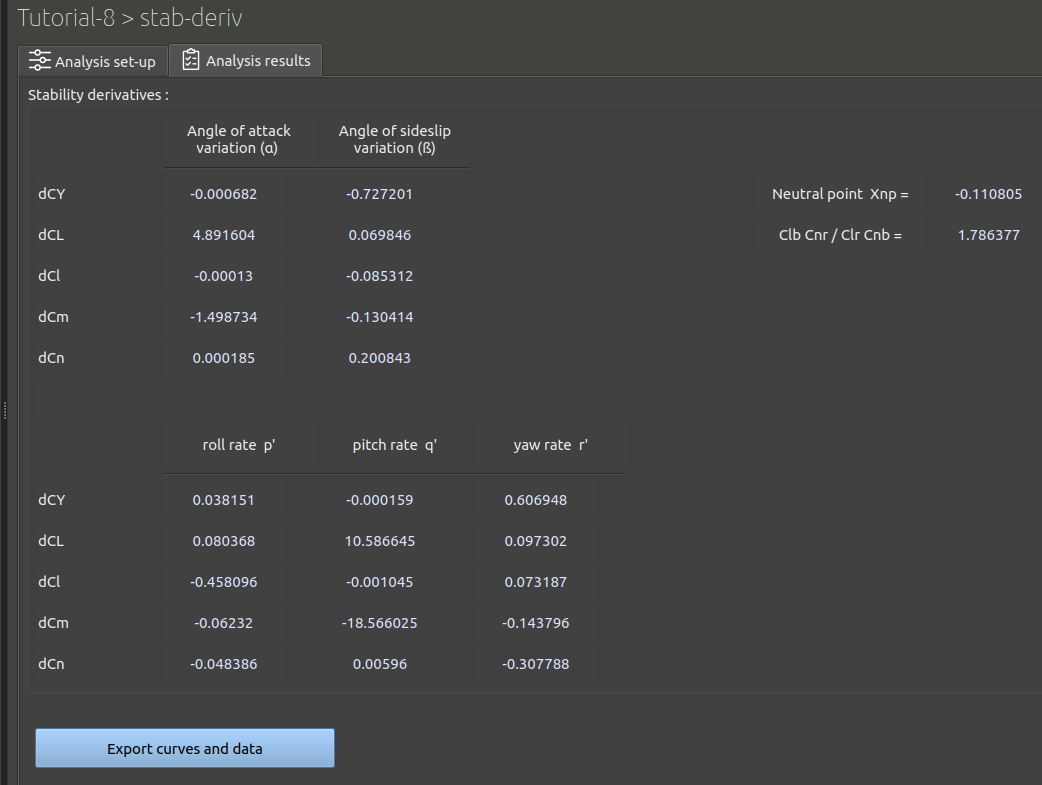Next: 6 VLM analysis set-up Up: tuto Previous: 4 Setting up the Contents
In the "Projects" tab, selecting the analysis that was created, then selecting the "Analysis results" tab, you can visualise the table of derivatives. As computations are done, this table will fill up with values.

it should be noted that all these values are computed for angle in radians. A few explanations on this table:
 column, there are two elements that are not neglitable, the first one is dCL/dC
column, there are two elements that are not neglitable, the first one is dCL/dC , often noted CL
, often noted CL , value is 4.89. This means that the CL will increase by 4.89 for a rotation of 1 radian. Or, if we consider an increase of angle of attack of 1°, the CL will increase by: 4.89*
, value is 4.89. This means that the CL will increase by 4.89 for a rotation of 1 radian. Or, if we consider an increase of angle of attack of 1°, the CL will increase by: 4.89* /180 = 0.08535. The CL
/180 = 0.08535. The CL is positive meaning the lift will increase when the angle of attack is increased, which is logical.
is positive meaning the lift will increase when the angle of attack is increased, which is logical.
 column is the dCm/dC
column is the dCm/dC , often noted Cm
, often noted Cm . It is negative meaning the pitching moment decreases when the angle of attack increases. In other words the aircraft is longitudinally stable.
. It is negative meaning the pitching moment decreases when the angle of attack increases. In other words the aircraft is longitudinally stable.
 column, there are no neglectable elements. The CY
column, there are no neglectable elements. The CY is negative: Lateral force will be left sided with positive sideslip angle. The CL
is negative: Lateral force will be left sided with positive sideslip angle. The CL is slightly positive: the lift slightly increases in sideslip. The Cl
is slightly positive: the lift slightly increases in sideslip. The Cl is negative: this means the aircraft is lateraly stable, it will roll into the turn in sideslip. The Cm
is negative: this means the aircraft is lateraly stable, it will roll into the turn in sideslip. The Cm is slightly positive: slight pitching up in sideslip. The Cn
is slightly positive: slight pitching up in sideslip. The Cn is positive: the aircraft is directionally stable, when sideslip occurs it will yaw toward the incoming airflow.
is positive: the aircraft is directionally stable, when sideslip occurs it will yaw toward the incoming airflow.